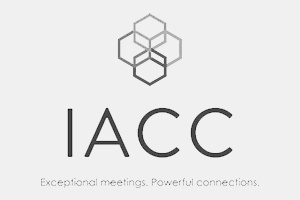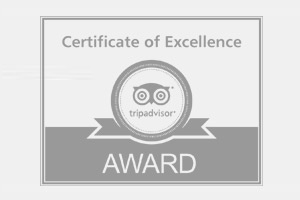Andy Stopps, Director of E-learning at Maguire Training spoke at our L&D Thought Leader's Conference in May. In an insightful guest blog below, he explores everything you need to know about Modern Learning:
Everybody is learning – technology enables this to happen in a variety of ways
Learning is constantly changing, you just have to look back in time to see how the range of media and resources has expanded. An easy way of demonstrating this would be to look at the Encyclopaedia Britannica. Once upon a time, this was possibly the most advanced learning resource available, but in the modern world of technology even those of retirement age have ditched the leather-bound books in favour of the internet, tablets, television and a whole host of other learning resources. We are all modern learners. However, Learning & Development professionals are often accused of not fully supporting, or even considering these new learning techniques to ensure that we get the full potential of our employees.
Learning isn’t a new thing
By learning we are gaining knowledge or skills. Formally this is in the format of studying, gaining experience or being taught. It is clear to see that this is something that has been happening since the beginning of time - it’s how we improve, evolve and maintain our species but as we evolve our way of learning evolves with it. We are shaped by the world around us and there is now an expectation that the interactions & technology that we use for our individual development outside of work should be available to be used within the workplace.
Learning & Development (under a number of guises) has existing within organisations for decades, but in recent years more businesses have embraced the need to continually develop their employees to increase both individual and organisation performance.
The workplace is changing
The modern work environment has changed dramatically over the last decade at the end of last year 37% of the global workforce were ‘mobile’ and this number is expected to grow massively this year. With the rise of mobile working has come requirement for collaboration tools so that those outside of the business can still be effective.
The difficulty lies with ensuring that all employees are given the time and resources to learn in an effective manner, on skills relevant to their development and in a manner where they aren’t distracted by tasks that are seen to be more important. To this end, a survey has shown that most employees spend as little as 1% of their working week actively learning.
Distractions are increasingly a problem with ringing phones and pinging emails. People are more likely than ever to be flitting from one task to another, having plans that are never long term and the majority of knowledge is discovered ‘Just in time’ and rarely retained.

What are the traits of a ‘Modern Learner’?
- Short attention span: The average attention span of a modern worker is now 8 seconds
- Multi-tasker: Writing a paper, viewing a video, responding to emails & taking phone calls
- Embraces Social Media for a range of purposes
- Born digital: Living in an on-demand society of TV, apps and learning content
- Impatient: On demand information, 5 seconds to gain & keep their attention. Only 38% of workers say they have opportunity for learning & growth at their workplace.
- Easily Distracted: The average employee checks their smartphone 9 times every hour for updates
How do they learn?
Learning is continuous and it comes from everywhere. It doesn’t just happen in a classroom at an assigned time and at agreed intervals - we are always learning. I recently read that Twitter is now the largest learning resource that exists. I didn’t understand that initially, but on reflection, this form of social media allows people to quickly share learning content of interest, comment on it and search for it at the touch of a button.
As job roles change to become more multi-faceted, learning from doing is becoming even larger than the 70% in the traditional 70:20:10 model. We are moving towards a ‘gig’ culture where employees are encouraged to learn new skills and apply them to assist with projects and constantly develop new skills. Forward thinking employers are encouraging their workforce to think more holistically and collaborate more on projects in order to develop new skills and relationships. This is alien to the time when you joined an organisation with a very set job role which you performed throughout your career.
Learning trends are showing that employees are also taking ownership of our own learning, not waiting around to be told to learn or to be sent on a course; we now have the technology we need to find out what we need to know wherever we are. This is allowing people to develop new skills and knowledge that they can either use within their organisation or will allow them to move elsewhere in the future.
We are becoming an increasingly more social generation – sharing our experiences across a number of platforms and encouraging others to comment, share and like so that they also become involved in the learning process. This includes embracing failure – something we need to do to continually learn and develop. Anyone using the hashtag #fail has a learning point for the future.
Modern learners have a willingness to learn, try new things and make mistakes.
“We’ll need to equip ourselves with the skills required to navigate an uncertain future. This means “learning how to learn” using rapid learning approaches and simulation based training. Core skills will include problem solving, scenario planning, design thinking, systems understanding and collaboration.” Rohit Talwar: The future of work
In the process of workplace learning, recognition and recording becomes an important concept, especially as we move away from formal courses. This move coincides nicely with the technology – the move away from rigid Learning Management Systems to more flexible and cost-effective Learning Record Stores.
The motivated learner who identifies “I’ve learnt something”, whether it’s shadowing a colleague, watching a video on YouTube, completing an e-learning module or even reading an old fashioned book, needs somewhere to record that information and reflect on it, and that’s the benefit of an LRS.
Putting this into practice. Somebody who works in L&D is now able to author a module on digital learning and publish it immediately and within minutes this can be undertaken by a large learning population. Reversing the concept of “I’ve learnt” to “I’ve taught” in a very convenient way.
Summary
Everybody in your workplace is learning. Some are outwardly keener than others to learn and everyone will have their preferred learning style. To make learning effective we need to understand what is relevant for each individual with regards to their current job role, career aspirations and how they best learn. It is essential that we continually evaluate this and encourage active ownership and discussion of development plans.
Technology helps us to deliver more learning on-demand, to fit around busy working lives and a constantly distracted working day (any spelling mistakes or poor grammar in this blog can be put down to me checking my smartphone). It also allows learners to identify, record and analyse what development is taking place. This helps the modern L&D professional to gain an insight that helps ensure the right people are given access to the right learning resources at the right time to help them and the organisation.
Maybe you should go and record somewhere that you’ve read this article and reflect on what you can do to ensure that modern learners have all the tools they need to flourish?






